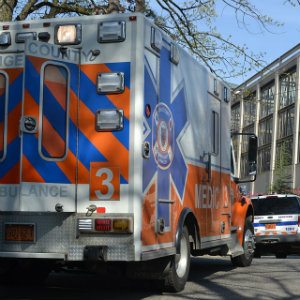You don’t need a medical degree to understand that when a patient is suffering from a serious illness or injury, the time it takes for them to obtain medical care can mean the difference between life and death. Although ambulances are equipped with emergency lights to inform other drivers on the road of their need for an unobstructed lane, it still isn’t the fastest way to get to a hospital. When every second count, paramedics, nurses, and doctors rely on helicopters to transport patients quickly.
This means, however, that the hospital places their faith in the helicopter’s owner, manufacturer, and pilot to keep their employees and patients safe. Sadly, because of poor safety and defective products, sometimes the employees become the patient.
Our personal injury attorneys handle many types of injury cases, visit our next article to learn more: https://banvillelaw.com/spinal-cord-injury-lawsuit/
Recently, a flight nurse and a flight paramedic became the two most recent victims. The two women were on board a helicopter flight which was departing from an air medical
Both women were seriously injured. The nurse sustained a T-12 fracture and a coccygeal fracture. Doctors had no choice but to perform surgery, a T-12 laminectomy with a pedicle screw fixation as well as a decompression of the spinal canal. The surgery was not entirely successful and she became paralyzed. After surgery, she was hospitalized for months and then had to go through extensive rehabilitation.
The paramedic also sustained damage to her spine, a fracture at L-1 and her doctors performed a laminotomy and a percutaneous screw fixation with tented kyphoplasty.
Both women still have limited range of motion in their spine and chronic back pain.
The victims of the crash filed a lawsuit against both the pilot and the company that owned the helicopter. They alleged that their injuries were sustained because the helicopter seats had been replaced by aftermarket seats that were non-energy absorbing. They claimed that if the company had kept the shock-absorbing passenger seats, they would not have been injured.
The case did not go to trial because the two parties settled out of court for $3.3 million.
The money awarded to these two plaintiffs will go towards paying for their past and future medical expenses, lost wages, and the physical and emotional trauma they have suffered.
Whenever someone is harmed because of the negligence of another party, the injured party usually has the right to pursue legal action.
In order to win compensation for losses, the plaintiff must prove several things. First, that the defendant owed them a duty of care. This means that the defendant must do everything that a 
For example, if two parties are in two separate cars on a highway, it is a reasonable person who is driving the vehicle would do everything in their power to keep their eyes on the road in order to avoid an accident. The driver owes a duty of care to other drivers on the road.
Second, the plaintiff must show that the defendant breached that duty of care by failing to act in a certain manner. Third, the breach must have caused the plaintiff's injuries, and finally, the plaintiff must have sustained losses because of the breach.
Proving a case isn’t always simple and many victims find that they need the assistance of a personal injury attorney.
The thought of working with an attorney can be daunting to some and that is understandable. Just like any other industry, clients want to know that the person they are working with has their best interests at heart. That’s why it’s important to ask questions before agreeing to work with a specific law firm.
Questions that are always important to ask are:
Once a law firm that fits a victim’s needs has been found, an attorney can handle the communication with any insurance companies, file the appropriate paperwork, investigate the accident, obtain evidence, and find professional experts who can testify on the plaintiff’s behalf if the case goes to trial.
See our next blog post on: Is Uber Safer Than A Yellow Taxi Cab?